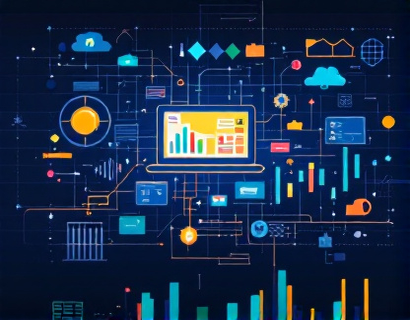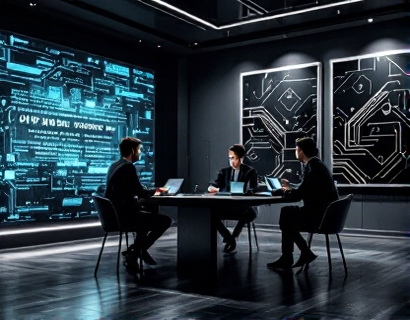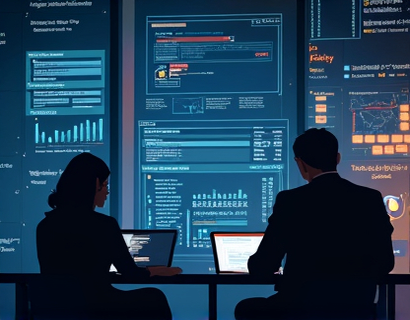Maximizing Digital Asset Security: Innovative Software for Robust and Flexible Self-Custody Management Solutions
In the rapidly evolving landscape of digital assets, ensuring the security and management of these valuable resources has become paramount for both businesses and individuals. The rise of cryptocurrencies, non-fungible tokens (NFTs), and other digital assets has led to an increased need for secure and flexible self-custody solutions. This article delves into the innovative software solutions that empower users to create robust self-custody systems, simplifying complex arrangements and ensuring the secure management of digital assets.
Understanding Digital Asset Self-Custody
Digital asset self-custody refers to the practice of managing and storing digital assets using personal devices or platforms, rather than relying on third-party services. This approach offers greater control and security, as users maintain full ownership and access to their private keys. However, managing digital assets securely and efficiently requires sophisticated tools and strategies.
Challenges in Digital Asset Security
The security of digital assets is threatened by various factors, including hacking, phishing, and human error. Traditional custodial services, while convenient, can be vulnerable to breaches and regulatory issues. Moreover, the complexity of managing multiple assets and private keys can be overwhelming for individuals and businesses without specialized knowledge. Innovative software solutions aim to address these challenges by providing secure, user-friendly, and flexible self-custody management tools.
Key Features of Innovative Self-Custody Software
Effective self-custody software combines several key features to ensure robust security and ease of use. These include:
- Multi-Factor Authentication (MFA): Enhances security by requiring multiple forms of verification before accessing digital assets.
- Hardware Wallet Integration: Supports secure storage of private keys on hardware wallets, reducing the risk of online attacks.
- Backup and Recovery Options: Provides secure methods for backing up private keys and recovering access in case of loss or device failure.
- Transaction Monitoring: Alerts users to suspicious activities and unauthorized transactions in real-time.
- User-Friendly Interfaces: Simplifies complex operations through intuitive designs, making self-custody accessible to a broader audience.
Flexible Arrangements for Diverse Needs
Innovative self-custody software caters to a wide range of users, from novice investors to experienced traders and businesses. The flexibility of these solutions allows users to tailor their self-custody setups to meet specific requirements. For instance, some software offers customizable wallet templates, enabling users to organize assets by type, project, or purpose. This level of customization ensures that users can manage their digital assets efficiently and securely, regardless of their complexity or volume.
Enhancing Security Through Advanced Encryption
Security is the cornerstone of any self-custody solution. Advanced encryption techniques, such as AES-256, are employed to protect private keys and ensure that only the authorized user can access their digital assets. Additionally, zero-knowledge proofs and other cryptographic methods can be integrated to further enhance privacy and security. These technologies ensure that even if a third party gains access to the storage device, they cannot decipher the private keys without the user's consent.
Simplifying Complex Arrangements with Smart Contracts
Smart contracts are self-executing contracts with the terms directly written into code. In the context of self-custody management, smart contracts can automate various processes, such as asset transfers, dividend distributions, and access controls. This automation not only reduces the risk of human error but also streamlines complex arrangements, making them more efficient and secure. For example, a smart contract can be programmed to release funds to a project once certain milestones are met, ensuring transparency and trust among all parties involved.
User Education and Support
One of the most significant barriers to adopting self-custody solutions is the lack of understanding and confidence in managing digital assets securely. Innovative software providers often include comprehensive educational resources, such as tutorials, webinars, and FAQs, to help users grasp the concepts and best practices. Additionally, dedicated customer support ensures that users can seek assistance whenever needed, further enhancing the overall security and usability of the self-custody solution.
Case Studies: Real-World Applications
To illustrate the practical benefits of innovative self-custody software, consider the following case studies:
Case Study 1: Individual Investor
John, an individual investor, uses a self-custody solution to manage his cryptocurrency portfolio. He appreciates the multi-factor authentication and hardware wallet integration, which provide an additional layer of security. The software's user-friendly interface allows him to easily monitor his assets and execute transactions. Recently, John received an alert about a suspicious activity on one of his wallets, which he promptly addressed, thanks to the real-time monitoring feature. This peace of mind has encouraged John to diversify his investment portfolio further.
Case Study 2: Business Management
ABC Corp, a tech startup, utilizes a flexible self-custody platform to manage its blockchain-based project tokens. The platform's customizable wallet templates help the company organize tokens by project phase and team member. Smart contracts automate the distribution of dividends to shareholders, ensuring timely and transparent payments. The hardware wallet integration and advanced encryption methods have protected the company's assets from potential cyber threats, allowing ABC Corp to focus on growth and innovation.
Future Trends in Self-Custody Software
The landscape of self-custody software is continually evolving, driven by technological advancements and user demands. Some emerging trends include:
- Decentralized Self-Custody Solutions: Leveraging blockchain technology to create fully decentralized self-custody options, eliminating the need for central authorities.
- Integration with DeFi Platforms: Seamless integration with decentralized finance (DeFi) platforms to manage assets across various protocols and services.
- Biometric Authentication: Incorporating biometric methods, such as fingerprint or facial recognition, for enhanced security and convenience.
- Cross-Platform Compatibility: Ensuring that self-custody solutions work across different devices and operating systems, providing a consistent user experience.
Conclusion
Innovative software solutions are revolutionizing the way businesses and individuals manage their digital assets. By offering robust security, flexibility, and user-friendly interfaces, these tools empower users to take control of their digital wealth. As the digital asset landscape continues to grow, the importance of reliable self-custody management solutions will only increase. Users are encouraged to explore these advanced tools to ensure the safety and efficiency of their digital asset management.










































